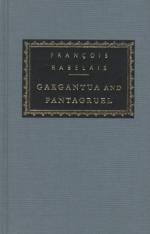Their gowns, being still correspondent to the season, were either of cloth of gold frizzled with a silver-raised work; of red satin, covered with gold purl; of tabby, or taffety, white, blue, black, tawny, &c., of silk serge, silk camlet, velvet, cloth of silver, silver tissue, cloth of gold, gold wire, figured velvet, or figured satin tinselled and overcast with golden threads, in divers variously purfled draughts.
In the summer some days instead of gowns they wore light handsome mantles, made either of the stuff of the aforesaid attire, or like Moresco rugs, of violet velvet frizzled, with a raised work of gold upon silver purl, or with a knotted cord-work of gold embroidery, everywhere garnished with little Indian pearls. They always carried a fair panache, or plume of feathers, of the colour of their muff, bravely adorned and tricked out with glistering spangles of gold. In the winter time they had their taffety gowns of all colours, as above-named, and those lined with the rich furrings of hind-wolves, or speckled lynxes, black-spotted weasels, martlet skins of Calabria, sables, and other costly furs of an inestimable value. Their beads, rings, bracelets, collars, carcanets, and neck-chains were all of precious stones, such as carbuncles, rubies, baleus, diamonds, sapphires, emeralds, turquoises, garnets, agates, beryls, and excellent margarites. Their head-dressing also varied with the season of the year, according to which they decked themselves. In winter it was of the French fashion; in the spring, of the Spanish; in summer, of the fashion of Tuscany, except only upon the holy days and Sundays, at which times they were accoutred in the French mode, because they accounted it more honourable and better befitting the garb of a matronal pudicity.
The men were apparelled after their fashion. Their stockings were of tamine or of cloth serge, of white, black, scarlet, or some other ingrained colour. Their breeches were of velvet, of the same colour with their stockings, or very near, embroidered and cut according to their fancy. Their doublet was of cloth of gold, of cloth of silver, of velvet, satin, damask, taffeties, &c., of the same colours, cut, embroidered, and suitably trimmed up in perfection. The points were of silk of the same colours; the tags were of gold well enamelled. Their coats and jerkins were of cloth of gold, cloth of silver, gold, tissue or velvet embroidered, as they thought fit. Their gowns were every whit as costly as those of the ladies. Their girdles were of silks, of the colour of their doublets. Every one had a gallant sword by his side, the hilt and handle whereof were gilt, and the scabbard of velvet, of the colour of his breeches, with a chape of gold, and pure goldsmith’s work. The dagger was of the same. Their caps or bonnets were of black velvet, adorned with jewels and buttons of gold. Upon that they wore a white plume, most prettily and minion-like parted




